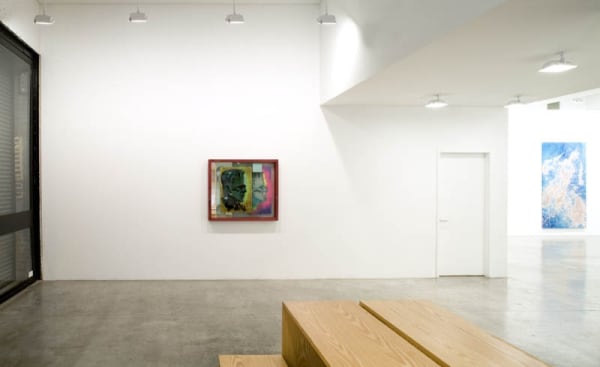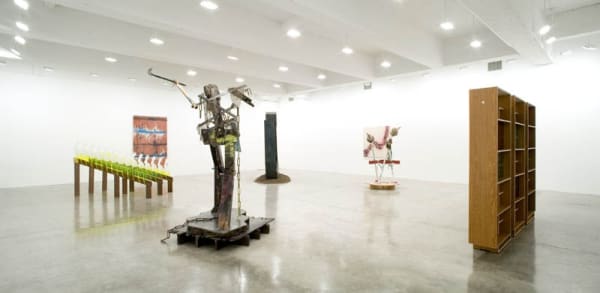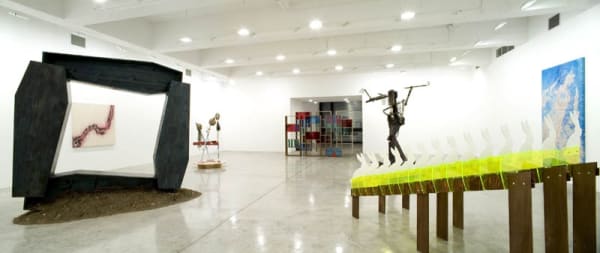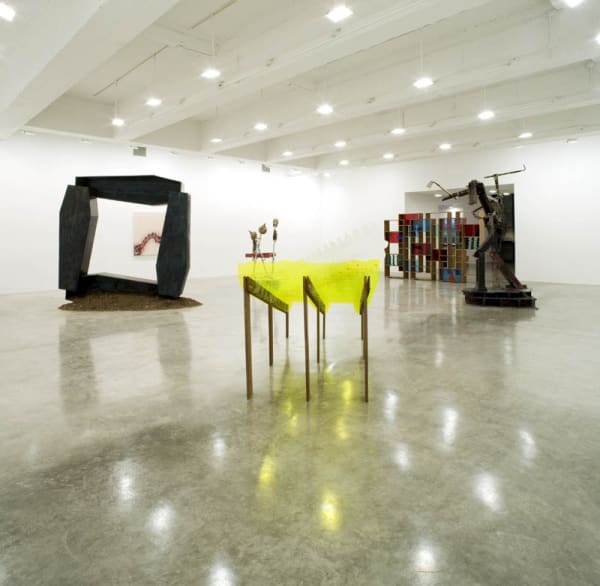JASON MEADOWS: FRAME NARRATIVE: Tanya Bonakdar Gallery, New York
Tanya Bonakdar Gallery is very pleased to present Frame Narrative, the gallery’s fourth solo exhibition with Jason Meadows. Continuing his compelling investigation of figuration, narrative, form, and material, Meadows takes Mary Shelley’s Frankenstein, and Lewis Carroll’s Alice’s Adventures in Wonderland as points of departure, reconfiguring in three dimensions the rich tradition of imagery that the characters from each of these stories provide, to create engaging sculptures that hover at the border of abstraction and representation.
Exploring the potential of visual storytelling, Meadows borrows the literary term “frame narrative,” defined as the setting of one story within another, to present multiple simultaneous narratives in each of these pieces. In translating unmistakable figures; the monster, from Frankenstein, or the White Rabbit from Alice’s Adventures in Wonderland, from the two dimensional to the three dimensional, Meadows launches these characters from the page, referencing not only their original representation, but also and perhaps more importantly, their images as they appear on the pages of magazines, T.V. screens, and in the promotion of commercial products, the context in which they have become cultural icons. Meadows cuts-up, copies, repeats, and complicates these images, filtering our conception of the familiar through a lens of spatial complexity. Riffing on their source material, each work is part of a narrative, but one that is not necessarily linear or complete; they are elegantly animated excerpts, full of a multiplicity of meaning, avoiding rigid designation, or a firm place in an overall plot line.
This interplay between the recognizable and the un-placeable, and the layering of cultural iconography is developed formally in Frame Narrative as well. Meadows juxtaposes a rough edged, hand-made production quality, often by using found materials; an old banister, or metal grate, with glossy, commercial colors, creating assemblages that straddle the worlds of abstraction and figuration. The use of found materials is particularly relevant in the depictions of Frankenstein, as in “Big Frank” or “Monster Marquee,” due to the piecemeal fashioning of Shelley’s character, who was likewise constructed from remains. Addressing issues of creativity, Meadows, like the monster’s creator, imbues discarded material with new life. “Graverobber,” comprised of coffins that form a doorway or portal in the gallery, also refers to the possibility of creation from decay, and unifies the two distinct narrative threads that permeate the show, creating a figurative rabbit hole that can be used to enter the surreal universe of the exhibition.




